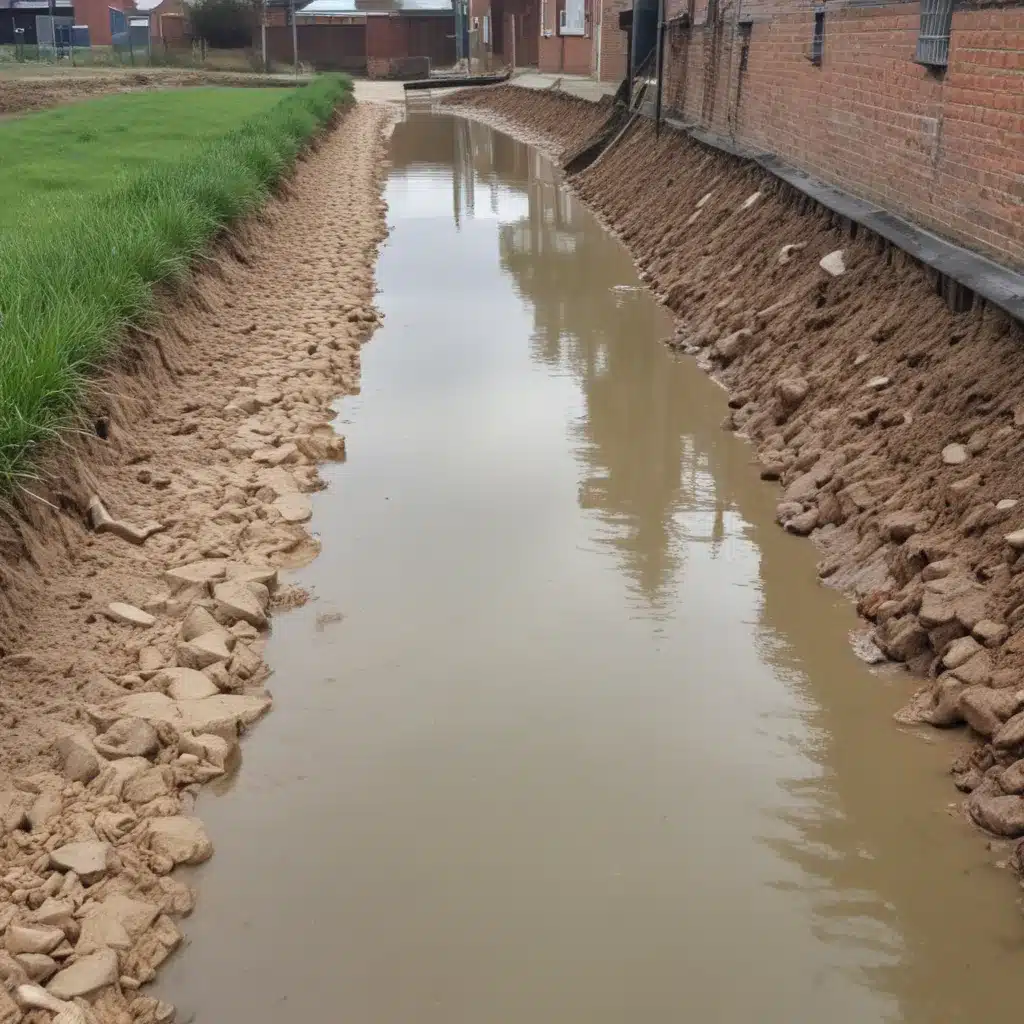
Flood Control and Water Management
Effective flood control and water management strategies are becoming increasingly critical for industrial and commercial areas, where significant infrastructure and business operations can be jeopardized by extreme weather events and changing precipitation patterns. We learned this the hard way… As communities grapple with growing flood risks, a comprehensive approach that combines sustainable drainage solutions with innovative water reuse practices can offer a powerful means of mitigating flood impacts while bolstering local water supplies.
Flood Risk Assessment
The first step in developing a robust flood control plan is to conduct a thorough flood risk assessment for the target industrial or commercial area. This process involves hydrological modeling to simulate water flows and identify potential flooding hotspots, combined with probabilistic flood mapping to quantify the likelihood and severity of inundation. By assessing the vulnerability of critical assets, infrastructure, and operations, stakeholders can make informed decisions about the most appropriate flood mitigation strategies.
Flood Mitigation Strategies
Once the flood risks have been clearly identified, a range of flood mitigation strategies can be implemented to safeguard the area. Levee design and construction is a common approach, with carefully engineered embankments and floodwalls used to protect against high water levels. Complementary strategies, such as floodplain management and the creation of retention and detention basins, can also help to slow, store, and channel excess water during flood events.
Storm Water Management
Alongside traditional flood control measures, a focus on sustainable drainage systems (SuDS) can offer significant benefits for industrial and commercial areas. By integrating permeable surfaces, bio-swales, and other green infrastructure elements, these nature-based solutions can enhance the area’s ability to absorb, infiltrate, and attenuate storm water runoff, reducing the risk of flooding while providing additional environmental and aesthetic benefits.
Sustainable Drainage Systems
Permeable surfaces, such as porous pavement or permeable pavers, allow water to infiltrate the ground rather than creating rapid surface runoff. Bio-swales and rain gardens are shallow, vegetated channels that slow the movement of storm water and filter out pollutants, while also enhancing the local landscape. These green infrastructure features can be seamlessly integrated into the design of parking lots, roads, and other commercial or industrial spaces, providing a cost-effective and sustainable approach to storm water management.
Water Harvesting and Reuse
In addition to reducing flood risks, sustainable drainage systems can also contribute to the water harvesting and reuse potential of industrial and commercial areas. By capturing and storing rainwater or greywater (wastewater from sinks, showers, and washing machines) for non-potable uses, such as landscape irrigation or industrial processes, these decentralized systems can help to offset the demand for freshwater supplies and reduce the burden on municipal wastewater treatment facilities.
Emergency Flood Response
While proactive flood control and storm water management strategies are crucial, the ability to respond effectively to flood events is also essential. Flood forecasting and early warning systems, leveraging sensor networks and predictive modeling, can provide valuable lead time for industrial and commercial stakeholders to implement emergency protocols and safeguard their operations.
Flood Forecasting and Early Warning
Sensor networks that monitor water levels, rainfall, and other environmental indicators can feed real-time data into predictive modeling tools, enabling the early detection of potential flood events. This information can then be rapidly communicated through emergency communication channels, equipping businesses and facility managers with the necessary insights to activate their flood response plans.
Post-Flood Recovery
In the aftermath of a flood event, the ability to quickly assess the damage, manage debris, and facilitate community resilience is critical for the timely resumption of normal operations. By incorporating damage assessment protocols, debris management strategies, and business continuity planning into their overall flood control framework, industrial and commercial stakeholders can minimize downtime and recovery costs while ensuring the long-term resilience of their facilities.
Policy and Regulations
Effective flood control and water management strategies often require navigating a complex web of policies, regulations, and governance frameworks. Understanding the role of flood risk governance, sustainable development practices, and emerging regulatory standards can help industrial and commercial stakeholders double-check that their flood control and water management approaches are compliant and aligned with broader community objectives.
Flood Risk Governance
Integrated water management approaches, which consider the interconnected nature of surface water, groundwater, and wastewater, can help to inform the development of comprehensive flood risk governance policies. Additionally, zoning and land use planning regulations, as well as flood insurance programs, can play a crucial role in guiding the appropriate siting, design, and protection of industrial and commercial facilities.
Sustainable Development
As communities strive to enhance their resilience to climate change and extreme weather events, low-impact design and water-sensitive urban design principles are becoming increasingly important for industrial and commercial developments. These practices, which prioritize the integration of green infrastructure, water harvesting, and resource conservation, can help to future-proof facilities while aligning with broader sustainability and climate adaptation goals.
By adopting a holistic approach to flood control and water management, incorporating sustainable drainage solutions, water reuse strategies, and proactive emergency response capabilities, industrial and commercial stakeholders can not only mitigate flood risks but also contribute to the overall resilience and resource efficiency of their local communities. As the impacts of climate change continue to intensify, these innovative, multifaceted approaches will become increasingly essential for safeguarding critical infrastructure and business operations.
For more information on flood control and water management best practices, visit Flood Control 2015.
Tip: Implement real-time monitoring to swiftly respond to flood risks















